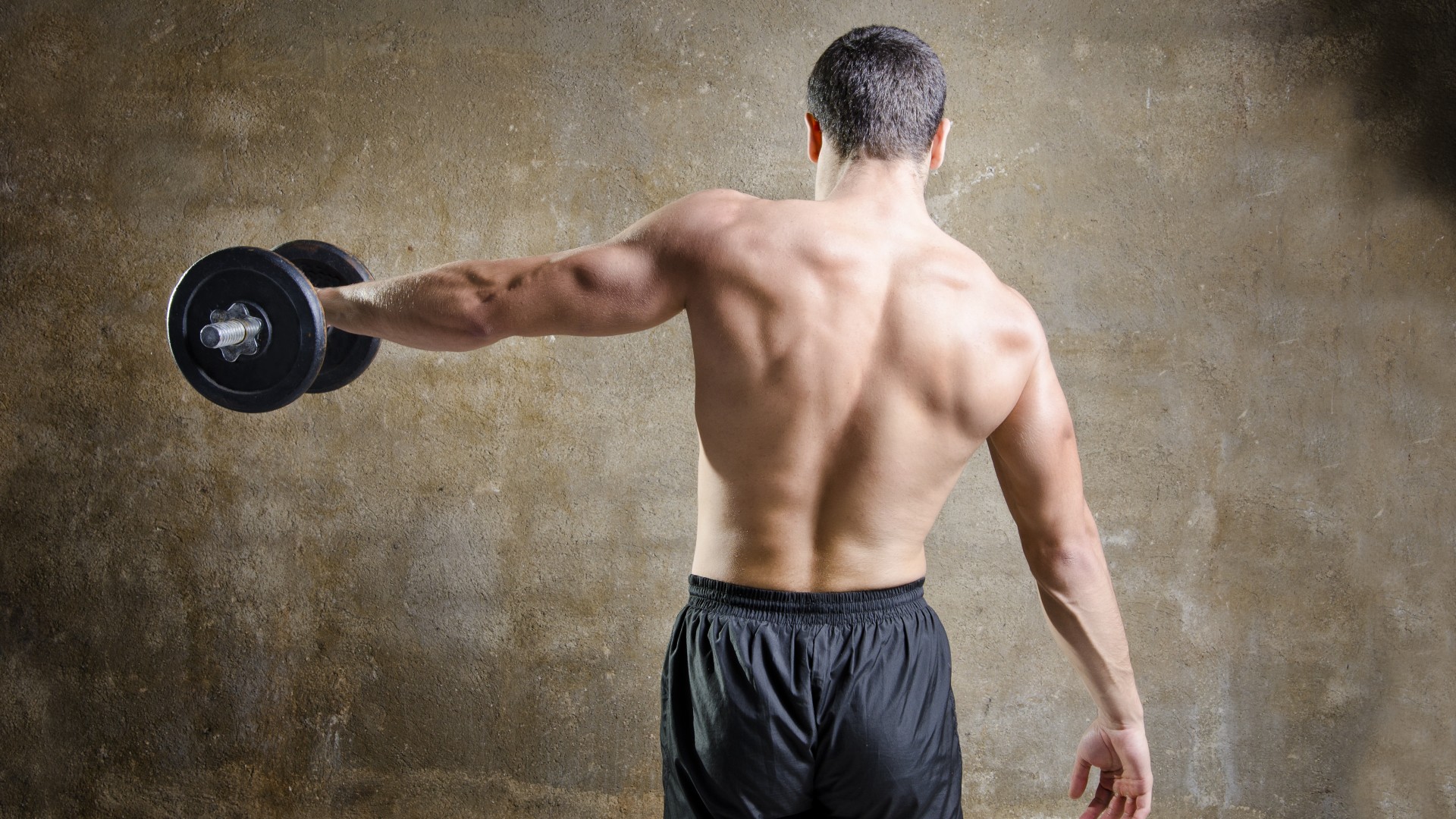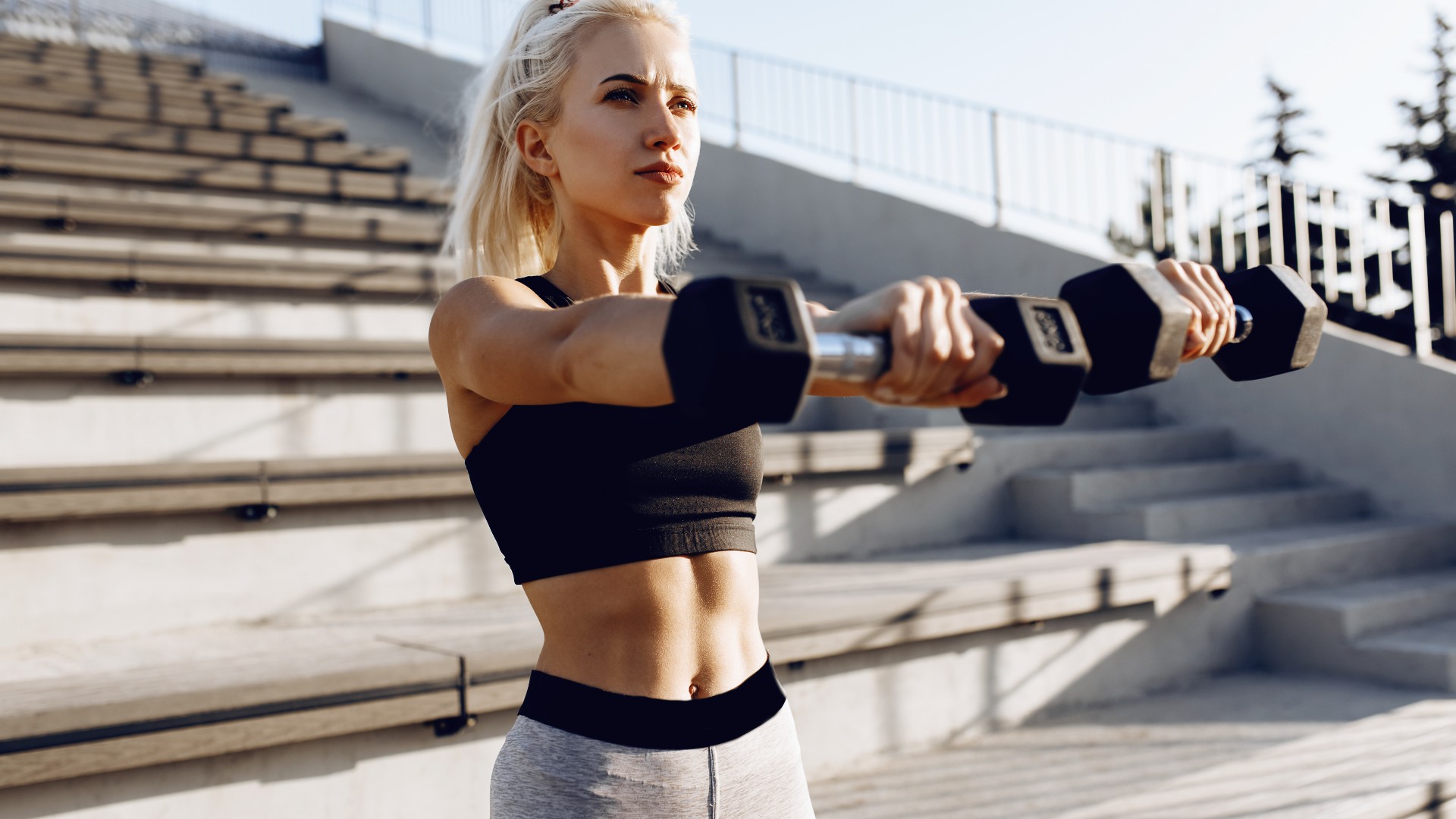
Add these four moves to your upper body workouts to build bigger shoulders using two dumbbells. If you only have one weight, you can still try this while working one side at a time.
To build well-rounded shoulder muscle definition, you’ll need to target all three shoulder heads — the anterior, posterior and lateral deltoids. That means using your weights in different planes of motion to hit all the muscle groups responsible for shaping your shoulders.
If you’re ready to build boulder shoulders, grab a set of the best adjustable dumbbells and try the four-move workout below.
What is the 4-move dumbbell shoulder workout?
YouTuber Marino Katsouris showcases these four moves for building bigger shoulders. You just need two dumbbells to challenge your muscles without losing your form.
Here are the four shoulder exercises:
- Lateral raises
- Upright rows
- Bentover row rear deltoid focus
- Alternating hammer shoulder press
- 10-12 reps, rest 90 seconds and repeat x 4 rounds
Trainer tips
This upper-body dumbbell workout loads the three parts of the shoulders responsible for creating muscle definition. Each move is programmed to use two dumbbells, but you could split or double the reps to work one side of your body at a time if you have limited access to the best gym equipment.
You can read how to do lateral raises in more detail but try to push the weights away as you lift them, then control the descent as you lower them back down. Avoid swinging the weights as you lift your dumbbells as this signals that the weights are too heavy, and keep your core engaged throughout both phases of the exercise — lifting and lowering.
Get instant access to breaking news, the hottest reviews, great deals and helpful tips.
Katsouris recommends leaning slightly forward to do the upright row — a popular move for targeting several muscle groups, including the lateral and frontal deltoids, trapezius and biceps. It’s also known for aggravating your shoulders if you don’t execute properly. As your elbows approach shoulder height, gently pull your shoulder blades together and squeeze your back muscles in a rowing motion. As long as your shoulders aren't internally rotated while you row, you shouldn't aggravate the joints.
As you approach the bentover dumbbell row, adopt a wider arm position to help focus on the posterior deltoids. Keep your back flat as you hinge at the hips and brace your stomach, adopting an overhand grip with palms facing your body.
The workout finishes on the overhead press using a neutral hand position with palms facing each other; it’s a narrower version of the dumbbell press called the hammer grip shoulder press. This time, alternate arms and keep it strict, meaning you’ll draw on core strength without using your legs to help (known as a push press) while also targeting your pecs and triceps.
It’s unclear from the video how many reps you should do for each move, so we recommend sticking to 10-12 reps and then resting between rounds. Katsouris recommends four rounds to reach that shoulder smolder, resting between rounds to recover briefly.
Benefits of dumbbells for shoulders

If there’s one technique I’ve picked up from years of teaching weightlifting, it’s that free weights are top-tier versus gym machines for building functional strength and muscle. Dumbbells, barbells and kettlebells are elite for improving your mobility, stability and range of motion, recruiting more muscle groups and helping you learn better and more efficient movement patterns.
Building strong shoulders provides the foundation for all upper-body exercises that involve pulling, pushing, or stability work. Whether you’re a powerlifter working on your clean and jerk or a weightlifting beginner learning the ropes, strengthening your shoulders will help you lift heavier and more safely.
Each of the moves above relies on activating the core muscles responsible for providing stability and proper posture, plus the rotator cuff muscles that stabilize and move the shoulder joints, so you can guarantee you’re getting plenty of bang for your buck (or smolder for your shoulders).
More from Tom's Guide
- I tried this 8-move full-body dumbbell workout, and I felt stronger in just 25 minutes
- Hypertrophy vs strength training
- Forget Russian twists — I did 50 Russian push-ups every day for one week, here’s what happened

Sam Hopes is a level 3 qualified trainer, a level 2 Reiki practitioner and fitness editor at Tom's Guide. She is also currently undertaking her Yoga For Athletes training course.
Sam has written for various fitness brands and websites over the years and has experience across brands at Future, such as Live Science, Fit&Well, Coach, and T3.
Having coached at fitness studios like F45 and Virgin Active and personal trained, Sam now primarily teaches outdoor bootcamps, bodyweight, calisthenics and kettlebells.
She also coaches mobility and flexibility classes several times a week and believes that true strength comes from a holistic approach to training your body.
Sam has completed two mixed doubles Hyrox competitions in London and the Netherlands and finished her first doubles attempt in 1:11.



